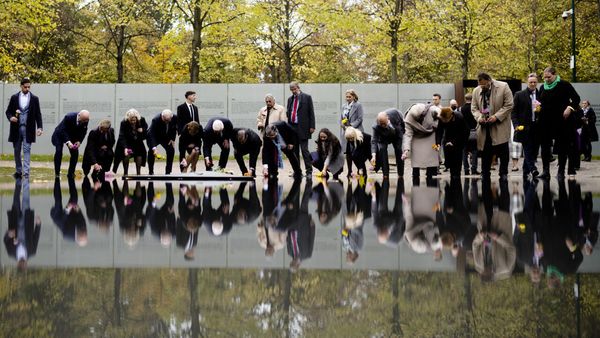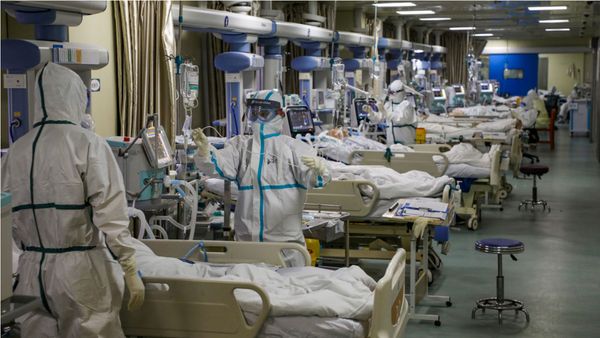
BEHIND every yarn often lies a stranger story.
I'm referring here to the short-lived Aberdare South Colliery (1913-1927), near the present village of Abernethy which featured on this page a few weeks ago.
So remote was this pit out in the Cessnock bush back in 1920, that it was gleefully tagged as 'Siberia' by everyone.
But for a mine that existed so long ago, people have refused to totally forget it, maybe because of its short, intriguing life.
For a start, unlike most other mine sites (with the exception of the Richmond Main pit near Kurri that has been turned into a rail museum), 'Siberia' physically lives on. Somehow, huge picturesque ruins miraculously survive 95 years on after the site was abandoned to the bush.
Today from afar, the remains of the Aberdare South Colliery look like a folly from the English countryside plonked from anywhere, south-east of Cessnock.
Almost surrounded by the Aberdare State Forest, the former colliery site has a massive, if roofless, engine winding house next to an enormous chimney towering above the gum trees. Then let's not forget its impressive big colliery 'lake' (a dam really) ploughed out of the tough, dry earth long ago by bullock teams. The excess soil was used to construct railway sidings.
The ambitious aim by the site's owners, Caledonian Collieries Ltd, back in 1913 was to make Aberdare South Colliery the largest mine operating on the whole South Maitland Coalfield.
But what was it like to work there? You can gather all the raw statistical data on production, prices and employment, but it's often all a bit pointless and boring.
That's why a miner's personal account, like the one which came into my possession recently, is invaluable.
It's only 15-pages of closely-typed A3 manuscript simply called Abernethy - a saga of Deep Creek Valley, but it reveals the human face of coal mining in a way official documents can never replicate.

Dating from 1981, this very rare and unusual recollection comes from Clyde R. Gerrish, J.P, of Cardiff. He started work at 'Siberia' as a 14-year old. His first job? It was cleaning chitter off the coal screens under a bellowing boss ("like a wet singlet - never off your back") but Gerrish quickly got to know all aspects of mine life.
Gerrish admits though that the Aberdare South Colliery was "the last place on the coalfields I wanted to be employed". Maybe it was because of the mine's remoteness from the bright lights of Cessnock, or maybe it was because of the pit's low wages (52 cents a day) and its wild west reputation.
There were obviously many decent blokes working at Aberdare South, but Clyde Gerrish didn't wait around beyond 1920-21.
He attended Cessnock Technical College, then moved to work at two places now long gone in Newcastle's East End. The first was the Parnell Place tram sheds from 1923 to 1926 and then at the nearby Zaara Street power station until he retired on August 23, 1970.
Aberdare South Colliery had abruptly closed in November 1927 after only operating for 14 years. The proposed showpiece pit closed the same year as the brand-new Abernethy Hotel(now a guesthouse) opened to serve miners and the 'new' township of Abernethy.
Reasons for the pit closure included high worker absenteeism, union strength, water problems, and a low coal output. This was despite the mine owners sinking the region's deepest coal shaft to reach a prized coal seam some 1406ft down.

According to Gerrish, 'Siberia' was also not highly regarded as a place to be after dark. He hated riding his pushbike home after a shift, fearing he'd "come a cropper" and grabbed by some hooligans after his bike's front wheel was "spiked" in the night.
Other riders, especially on a pay Friday night, would cycle home when their shift finished after 10pm at least three or four abreast for safety reasons.
Other mine workers living locally in "bag huts" might return home to find their suitcases slashed open and the contents ransacked. Thieves searching for money would gain entry by cutting holes in the rear of canvas tents. As a result, some miners carried all their money about all the time, even daily to work.
Another time, Gerrish said there was a "western type of shoot-up' in Frost's local billiard room. Two revolver shots were fired into the darkness by an irate punter after a player on a winning streak who suddenly left the game without giving fellow players the chance to win back their hard-won cash.
"Siberia in those far off days of its existence around 1918-1920 (also) appeared to have an attraction for sea-faring absconders (ship deserters) . . . however, for some, this place became the final stage of their exploration looking for a land lubber's job," Gerrish wrote.
"Crewmen from ships in port at Newcastle who had such talent within them, such as firing boilers and with rigging experience made their way to this colliery."
One mine worker he remembered ended up later keeping the boiler furnace going to provide hot water at Newcastle's Great Northern Hotel until the 1960s.
Gerrish also reports that in his day (1920) a miner wearing shorts to work was an oddity. All wore long trousers until after World War II.
Meanwhile, railway historian Ed Tonks said he wanted to fine tune some earlier reported facts, saying: "The Abernethy Hotel, a Tooth's hotel, (finally) closed in 1931 which is close to 1932".
Nor did its licence then go to the Racecourse Hotel at Wallsend as tradition suggests.
Tonks also states that in the early 1940s, Caledonian Collieries attempted to dewater the mine, but abandoned it after the colliery manager died when part of a headframe fell on him.
Coal & Allied then developed Aberdare East Colliery in the 1960s to work part of the former Aberdare South lease. However, it ran into an earlier problem of 'heavy roof' requiring extra roof supports and so was forced to close prematurely.
The final word on the mine though should go to former Miners Federation leader, the late Jim Comerford, of Weston. He said that in 1928 a large quantity of the colliery's crucial underground gear was sold to Soviet coal mines in Russia, possibly to ensure no rivals could reopen the pit.
The final irony was that when the pit suddenly closed in 1927, its expensive, custom-built new electric winder just imported from England wasn't needed. It never lifted a ton of coal.







